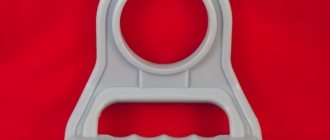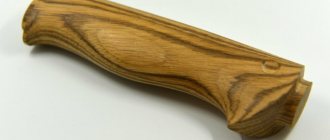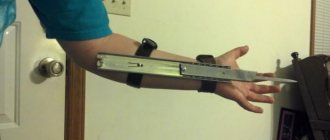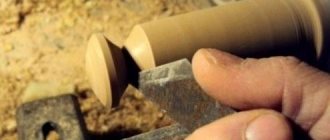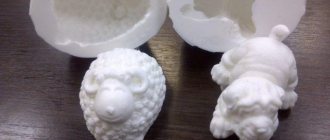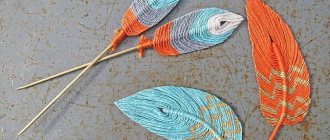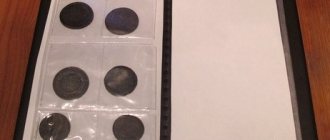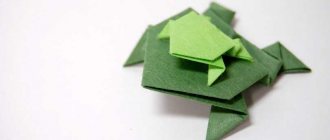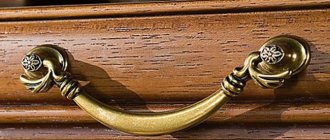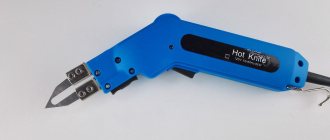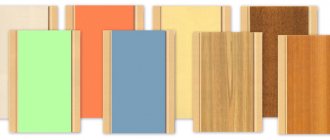The Yakut knife (Yakut. byһakh) is one of the main attributes of the Sakha people.
In each region of the republic you can find some of its own peculiarities of making a Yakut knife, although the general traditions are preserved, and only some of its details differ. The features of the Yakut knife are simplicity, ease of use and wide functionality. Yakut hunting knives can be useful for cutting fish, meat, or, if necessary, repairing something. Archaeological excavations show that in ancient times the ancestors of modern Yakuts used knives of a similar design, so we can say that the secret of the Yakut knife is passed down from generation to generation.
Nowadays, the Yakut knife is not only the personification of culture and history - it is widely used for a variety of purposes. It is difficult to find a Yakut family that does not have at least one traditional knife. A good knife for a Yakut hunter is his closest and most faithful friend. Hundreds of craftsmen throughout Yakutia are engaged in the production of Yakut knives. Therefore, there are many versions that imply a variety of its forms and features. Not everyone can make a Yakut knife with their own hands. Traditionally, they are not purchased ready-made, but are ordered individually. The master takes into account the wishes of the future owner - he will never want to be sold another one that is somewhat similar instead of a national instrument. Thus, a synthesis of the traditional and the individual is formed. Each Yakut knife has its own unique features, but they do not go beyond historical standards.
Drawings and dimensions
The sizes of the Yakut knife, due to its wide functionality, have a very wide range - from the smallest to the very large. Drawings of a real Yakut knife are not so easy to find, because the secret of its correct manufacture is carefully kept. General sizing information is given below.
According to manufacturing style and application, they are divided into twelve varieties:
- Oyuu bychchata - used for applying drawings (patterns) on wooden products. The length of the blade is 3-5 cm.
- Otohut bychchata - used by a doctor, healer, with a very thin and sharp end of the blade. Usually 3-7 cm.
- Wal o kychchanar bygychchata - a knife for a boy. Blade length 7-11 cm.
- Die-wat bykha - a homemade knife. Length 9-14 cm.
- Tabagyt bygaqa - used for cutting a deer carcass (reindeer herder's knife), the tip is very thin and beak-shaped. The blade is thin, one might say “delicate”. Length 9-12 cm.
- Kyra bult bykha - a small hunter's knife. The blade is 9-14 cm long. Soft hardening.
- Balyksyt bykha - fisherman's knife. The blade is wide, the spine is thin, the tip is slightly curved upward. The handle is made of birch bark.
- Bullt bull is a hunting knife. 15-18 cm.
- Mas uuhun bygychchata - used by cabinet makers. For cutting shaped parts of furniture and other wooden products. Length up to 12 cm.
- Mas uuhun bygakha - also for the cabinetmaker. For processing large parts, with a wide, thin blade. Strongly hardened.
- Badaai is a large knife. Up to 25 cm.
- Bolo bykhakh - even larger and heavier, blade length up to 30 cm. These two types of knives are long, designed for heavy work. For example, for butchering large animals, for cutting through ice, for cutting willows, overgrowth, etc.
In general, the dimensions of a Yakut knife can be divided in the following order:
- If the blade length is from 8 to 11 cm, then it is a small knife. It is called “bykychcha” and is made for children and women. However, there are a number of problems that are easier to solve with a knife with a small blade. Therefore, it can conditionally be classified as economic.
- A knife with a blade length from 11 to 17 cm is the most common. It is called “bykhakh” and is used for a variety of purposes.
- A longer blade - above 17 cm makes it a military weapon. It is called “khotonokh” and is made quite rarely.
There are also knives with a longer blade size, which already belong to the type of axes and spears. For example: the Yakut batas or the Yakut batyya, the length of their blade is 40-60 cm. This is a beautiful, light military weapon, once loved by the Yakuts. They could both stab and chop.
In the classification of the Yakut knife, the width of the blade also plays a role. If it is narrow, then it is classified as tundra. This makes it easier to cut something or make holes in something, which is what is primarily needed in tundra conditions. The taiga Yakut knife is intended for cutting hunting trophies or livestock, as well as for processing wood. It is easier to carry out such work with a knife with a wider blade.
DIY instructions
For people who live by reindeer herding and hunting, a knife is simply necessary. The blade is intended for both household work and more serious events. Depends, of course, on the length, as already described above.
In the Republic of Sakha, since 1995, by government decision, the Yakut knife has been recognized as a cultural part of the people inhabiting it. And thanks to this decision, the blade can be worn without any permission. And use it for everyday life and in the household.
The manufacture of products is also not punishable by law, and many craftsmen are engaged in forging knives. As a rule, they are very similar to their ancestors, the only thing that distinguishes them is steel. Previously, it was used softer, so that it could be sharpened in any conditions, but now they use anything for this purpose.
Springs, springs, bearings, files, parts from any equipment, etc. The only difference is this, but otherwise the process has not changed.
Blade size drawing.
To start manufacturing, make a drawing for yourself, and always refer to it while working. Small errors are acceptable. But it’s better to calculate everything in advance.
Blade
To make it, you can take any item from the above, but to reduce problems, choose a more rectangular shape. It will be easier to work with a file, let's try to give step-by-step instructions for making a knife at home:
- Cut a piece of the required size from the file and weld a rod to it for easy heating in the forge.
- Carry out the first heating slowly, when the color reaches incandescence (bright red), the temperature will be about 750 °C. It’s better to check with a magnet; professionals distinguish by color. If the workpiece is not magnetic, it's time to start forging it.
- It is better to use two types of sledgehammers: a heavy one, 4 kilograms, and a lighter one, 1.5 kilograms. We forge with a heavy hammer, if the workpiece cools down, put it back into the forge, watch its color, otherwise you can simply break it. You need to forge along the entire length to a thickness of 2-3 mm.
- Don't forget about the shank and the radius of the leading edge. You can immediately forge the slopes to make sanding easier.
- Forge a large fuller with the sharp side of a smaller hammer. We align the wedge and carry out normalization in oil. Don't forget a vacation for a couple of hours.
- We remove all irregularities with sandpaper and bring the shape to its normal form. We correct the slopes if necessary, and grinding and polishing - be patient.
File.
Warm up and cook.
Don't forget to reheat.
We continue to forge.
We forge a gutter.
Vacation.
After vacation, it is recommended to check the blade for cracks. Everything is done quite simply, place two bars on the ground at a distance, and the workpiece on them.
Slowly, deliberately step on it with your foot and transfer all your weight to the blade. It should withstand 60-70 kilograms, if your weight is more, ask someone.
If it does not change the geometry, then everything is done correctly, and you can continue with other stages.
Lever
Everything can be done simply with the handle; anyway, we won’t be able to make a real Yakut blade, it will be a replica, and nothing else. Therefore, we select an unnecessary small block of wood and go ahead:
- First of all, we drill a hole for the shank, insert the blade and select “caps” for a tighter fastening. At this stage, it is better to wrap the wedge with masking tape.
- We mix epoxy with sawdust, pour everything into the hole, insert the shank and drive in the prepared wood chips along the edges. We make sure that everything fits securely and leave it to dry for 24 hours.
- The next step is to draw the center lines and begin to plan the future handle from all sides. And in all available ways.
- Having reached a round shape and normal diameter, we grind the handle, soak it in oils, and then dip it in boiling wax for 30 minutes. This is at the request of the owner of the blade.
Let's drill.
Epoxy.
Marking.
Planing.
The work must be carried out carefully, one wrong move and the handle is damaged. You will have to clean the shank from the epoxy resin, which will already be like stone, and do all the work all over again.
Sheath
The easiest way is to make wooden ones; for this, two wooden blanks are taken, the width of which is larger than the resulting knife itself. Then, placing a blade 2/3 long on them, mark the grooves with a pencil. And we select them using a chisel and carefully sand them with sandpaper.
The next step is to carefully remove the excess from the outer sides with a plane. Then we check the fit of the knife in the sheath; if everything is good, we glue both halves with epoxy resin and sand the outside.
We apply the blade. Sampling with a chisel. We work with a plane.
Then we soak it in any oil, make a pendant and the sheath is ready. And as an option, you can sheathe it with leather.
Quite an original scabbard made of wood.
You can also sew separate sheaths from leather, the process is much more complicated, but aesthetically more pleasing to the eye.
There is an article on our website: “How to make a knife sheath with your own hands.” We really hope that it will help you.
Blade
The blade of the Yakut knife is asymmetrical. The butt is straight, even, and the blade is sharp. On the right side there is a dol. It can have a variety of shapes. Some craftsmen prefer to make a notch almost over the entire area of the side of the blade, leaving only a small edge near the butt, while others limit themselves to a groove that is shifted closer to the handle. In the same direction, the fuller can be wider, and towards the “nose” of the blade it narrows. This notch is called "yosom".
Yos arose for several reasons. Firstly, with it the Yakut knife resembled those that their ancestors made from bones. The notch is simply a tribute to tradition; it represents the natural opening for the bone marrow. From the technological side, it once arose as a compensatory leash when connecting, during the process of forging and hardening, soft and hard iron. Secondly, Yos simplifies sharpening and sharpening a knife in the cold and, although for some reason this is rarely talked about, it plays the role of a regular bloodstream, which is present on most combat knives.
The shape of the Yakut knife, the presence of an unsharpened, smooth side of the blade, which is called “bykhakh haptagaya,” enhances the piercing effect, which makes it possible to deliver piercing blows to animals with thick skin, as well as to pierce or drill the skin with a knife.
Today, only real masters know the true secrets of making a Yakut knife. Those copies that are distributed in central cities are far from the original. Typically, a Yakut knife is forged from soft steel. It’s easier to sharpen such a blade on anything—any suitable stone. It cannot be said that modern options involving the use of damask or Damascus steel have any negative properties. They just do not correspond to historical realities, which have always put practicality first.
Main characteristics
There are a number of signs by which you can unmistakably distinguish a Yakut knife from any other type of weapon used by northern tribes for hunting:
- Asymmetrical blade shape (extensive fuller on one edge, lens on the other).
- Sharpening is always carried out in one direction, in the direction from the fuller to the lens.
- The shape of the butt is ideally straight or slightly curved.
- The quality of forging is low and primitive.
- Mild steel is used, the knife can be easily sharpened with improvised means.
The Yakut knife resembles an ordinary working tool of ancient people. In fact, that is what he is. It is precisely because of its incredible practicality that this product differs from other types of edged weapons. Nothing is known for certain about the origin of the Yakut knife. Not a single written evidence or drawing of this weapon has survived to this day. According to one version of scientists, previously the Yakuts used imported metal to make their knives. This theory is confirmed by a number of documentary records obtained in 1978 during the collection of folklore heritage left by ancient peoples.
Blade
The standard blade size for the female version of the knife varies in the range of 80–110 mm, for the male model - 110–170 mm. There are specimens with a longer tip; they are equivalent to full-fledged military weapons. For example, the blade size of the “Batu” model is 500 mm; visually this Yakut knife is not much different from a modern sword.
The width of the tip also varies:
- tundra type knives always have narrow blades;
- taiga - with wide ones.
Narrow knives are convenient for fishing, hunting, herding herds of deer, and making holes in wooden blocks. Wide blades serve as a wood cutter; they are indispensable when cutting up the carcasses of wild and domestic animals. The traditional Yakut knife had a blade made of soft steel to make it easier to sharpen in the field.
Disputes about the appearance and practical benefits of the dole have been going on for a long time. Some researchers believe that this element was made specifically for cutting frozen meat, while others claim that it was used to reduce the weight of the product. A lightweight knife is more convenient to use and does not sink.
Handle
Since ancient times, knife handles have been made from birch burl, pre-impregnated with oil. The shape of the products is as simple as possible, without a guard or any other stops. Sometimes there are specimens with birch bark handles.
The cross-section of the handle resembles an egg: the end is narrowed and points towards the blade. Handle length - 130–150 mm. A properly made knife fits perfectly in both a woman’s and a man’s palm, and is comfortable to work with. Due to the fact that the handle is very light, it is almost impossible to drown the weapon.
Sheath
The sheath is an important attribute of Yakut knives. Previously, oxtail was used to make them, inside which a wooden gasket was placed. Since the blades of the knives are made of soft steel, the sheath was made in such a way that the blade did not come into contact with the wooden lining. The weapon is 2/3 immersed in the casing, which is tightly fixed to the handle.
Nowadays, genuine leather is still used as a material for sheaths, although it is not always removed in a single stocking from the animal’s tail. Sometimes you can find souvenir products in wooden or birch bark casings. The sheath is attached to the belt area with a special loop.
Handle
The handle of a Yakut knife is made from a single piece of birch burl - essentially a very strong wood, which is impregnated with oils. In cross section, the handle has the shape of an egg. This shape was chosen so that during some work the knife does not rotate in the hand.
The method of mounting the blade into the handle is interesting. First, a wide central hole is made and the pointed shank is driven into the handle. Then wedges made of soft wood are inserted on the sides of the blade. They are bursting, and they clamp the blade in the handle. In order to protect the wooden handle from moisture, it is impregnated with special oils.
The narrow side of the handle is directed towards the blade. The length of the handle is always greater than the length of the blade and the width of a man's palm. Usually it is 130 - 150 mm.
Firstly, in this way even a knife with a blade length of less than 110 mm turns into a weapon. The long handle allows you to deliver a range of strikes that would otherwise be much more difficult to execute.
Secondly, with such a handle it is much more convenient to cut up the carcasses of hunted animals.
Thirdly, a knife with a long handle will not sink in water - it will act as a float. The Yakut knife does not have any additional elements - guards, stops, etc.
Distinctive features
A real “Yakut” is similar in cross-section to the middle part of a tubular bone split in half: it is convex on one side. Archeology knows such bone knives, and some researchers of material culture do not exclude the possibility that ancient craftsmen copied traditional blades.
On the other side of the blade, on the canvas, a long fuller is forged - an oblong depression, a “blood hole”. The butt, or the part between the end of the blade and the handle, bends slightly closer to the tip. Sharpening is done only on one side.
Handle
Carbon steel, from which knives were made in ancient times, is a soft metal, and hardening technologies were imperfect then. Blades made of this steel wore out quickly and had to be replaced frequently. Over the course of a year, the owner changed 2-3 canvases, rearranging them into the same handle, which served for years and decades.
The wood of the birch burl (growth on the bark), from which the handles were made, is stronger and lighter than birch. Due to the lightness, length and width of the handle (wider than the average male palm), such a knife does not sink in water. To prevent swelling in a humid environment, the handles were impregnated with oil.
The composite handle was made from layers of birch bark: they were coated with glue, dried under pressure, and the base was made from this blank.
The craftsman made a large central hole in the handle and drove a pointed shank into it. Then chopiks were inserted into the sides of the blade - plugs made of soft wood, which clamped the blade on both sides. If necessary, the plugs were pulled out and the blade could be replaced.
Those who have used a handmade Yakut knife on hikes note that the long and oval-shaped handle does not interfere with working with mittens and does not rotate in the palm when used.
Blade
The sharpened, straight-edged, asymmetrical blade is sharpened on only one side, like a chisel. The right side (where the butt is) is flat, with a fuller cut out on it. This notch (or a series of notches) can be long, short, located closer to the tip or to the butt. The fuller serves to increase the rigidity and strength of the blade and lighten its weight
This is also important from the point of view of saving iron.
According to people who used a knife to cut large parts of a carcass, this feature makes it easier for the blade to pass between layers of meat. The left side of the blade is curved. Due to this, the knife glides well when cutting.
Yakut knives are made separately for right-handers and left-handers. Thanks to one-sided sharpening, it is possible to finely plan wood, meat or fish, skin carcasses and skin them. The narrow blade easily pierces hard leather or drills into wood. In addition, with a knife it is easy to cut off pieces of meat near the mouth (according to the traditional way of eating of northern nomads).
Such a single-sided knife is easier to sharpen and edit in the cold. This had to be done constantly due to the softness of the metal, but it was not difficult: any stone was suitable for this.
Modern researchers have another version of the appearance of one-sided sharpening. The low quality of hardening led to the fact that only the surface layer of the metal workpiece became dense and hard, while the steel inside the blade remained soft. With such a technological defect, this blade shape became the only possible one.
Sheath
In the old days, sheaths were made from the skin of an oxtail removed from a stocking or birch bark. A wooden liner was placed inside to protect the blade from breakage. The blade was held in place only by friction, since it was recessed into the sheath at 2/3 of the handle.
Sheath
The sheath of the Yakut knife is simple and functional. They are made from an oxtail, removed with a stocking, and a wooden insert inserted into it. The Yakut knife is recessed into a leather sheath 1/3 of the handle and is fixed there due to friction. The blade hangs freely in a wooden insert inside the scabbard.
This makes it possible to freely insert and remove a knife with a blade on which blood and fat freeze when cutting game in winter. By the way, a real Yakut knife can be removed with one hand, resting your thumb on the mouth of the sheath. The sheath is worn on the belt, on a free suspension from a leather strap in an inclined or horizontal position.
In the old days and today it is acceptable to use sheaths made from sewn pieces of leather. Once upon a time, birch bark was also used, very rarely only wood.
Features of the Yakut knife
An important feature of the Yakut knife, which distinguishes it from other products, is its asymmetry. On one side there is a groove, quite large in size, which runs along the entire blade. And the opposite side has a convex shape.
According to contemporaries, the quality of today's knives is in no way inferior to European manufacturers. And most importantly, the Yakuts do not lose the ancient methods of forging and making their products, but pass them on to their children.
There are several explanations for such interesting forms:
- in the old days, blacksmiths tried to save metal in this way, gradually drawing out the blade;
- Since the Yakuts live in extreme conditions, at -50 °C, -60 °C, it is almost impossible to sharpen a solid product. And with such a fuller, the blade became thinner and more pliable;
- when skinning a carcass, especially when skinning, the recess in the blade prevented it from “sticking.” And due to the small contact area and air space, the work became much easier;
- the sheath was made from oxtail, removed like a stocking. And wooden inserts were made inside so that the knife would not break. They were also made from birch bark or sewn together with animal skin.
Clearly visible gutter.
Another important point is that the blade is sharpened on one side. But the handle was and is still being made from birch rhizomes.
It is quite reliable and has good grip on the shank.
Sharpening
Sharpening of a Yakut knife is done from the fuller side (on the right for a right-handed person, on the left for a left-handed person). You should apply the block to the cutting edge at a slight angle (<5°) and sharpen the blade from top to bottom (in the direction from the butt to the edge) until a thin shiny line appears on the cutting edge. This line is called “kylaan” in Yakut and is the sharpest part of the cutting edge.
Some experts claim that this is a burr and should be removed, but you should not listen to them; most likely, they do not know how to sharpen a Yakut knife correctly. "Kylaan" should have a slight angle to the left side of the blade. It is strictly forbidden to sharpen a Yakut knife on the left - it has a one-sided sharpening. On the left, it is only allowed to slightly (extremely carefully) adjust the “kylaan” when it bends.
Sharpening is carried out as the “kylaan” disappears. To do this, you need to have several bars with different grain sizes. Grind from coarse to fine.
Do not stir the coals with a Yakut knife or heat the blade excessively. In this case, a release will occur - the blade will become soft. For the same reason, you cannot sharpen a blade on an electric sharpener.
Varieties
Handmade Yakut knives come in several types. They differ mainly in the length of the blade. The shape of the tip, sheath and handle are modified slightly.
Bykhych
This bladed weapon has the shortest blade, its length varies from 80 to 110 mm. Bykhycha is usually used by women for cooking or cutting ropes. These same small knives are given to Yakut children who have reached the age of five, so that the kids develop and improve their skills in using edged weapons.
Bychakh
Knives are made with a blade length from 110 to 170 mm. Used for economic purposes, indispensable during fishing and hunting. Bychakh is ideal for:
- peeling vegetables and cutting meat;
- making vines;
- cutting nets, ropes, cables and other things.
Khotokhon
The khotokhon blade is 170 mm long, which makes it a real military weapon. War was not typical for northern peoples; usually fishermen who went to the tundra or taiga for a long time took the product with them when fishing. The long blade was indispensable for protection against wild predators. According to the current legislation, the weapon, according to its technical characteristics, belongs to the bladed weapon, the carrying of which requires a special permit. But since hotokhons are exclusively souvenir products, these hunting knives can be found in the public domain.
Batuya
Batuya is the most massive Yakut knife. The 500 mm long blade allows the product to be used as a sword or spear. Northern peoples use it very rarely, for example, in order to:
- get through the dense thicket;
- get branches for making a fire;
- catch a fish (only if you have experience with a spear);
- chop into pieces the carcass of a wild animal killed during a hunt.
Wearing and using
A leather strap or cord is threaded into the sheath. With its help, the Yakut knife is attached to the belt, on the left side and with the blade to the left. This makes it possible for a right-hander to grab it quickly. Of course, left-handers carry a knife on the right. The suspension is free so as not to interfere with movements.
It should be understood that the “bykhakh” with a notch and a forged blade length of 110 mm is a real weapon. And its production, distribution and carrying is a matter that is reflected in the Criminal Code. This was the case during the times of the RSFSR, when “bykhakh” was outlawed. True, possessing a knife did not entail any serious consequences. In modern Yakutia, this is regulated by a separate act of the government of the Republic of Sakha.
The Yakut knife is recognized as part of the culture of the Sakha people, and its storage and use in everyday life, sale to tourists and demonstration during public events are allowed on the territory of the republic. Handmade Yakut knives not only become exhibits at folk art exhibitions, but are also widely used in everyday life, during hunting, fishing, and various housework.
About the handles
To make a classic knife, the Yakuts used birch burl, which was pre-impregnated with special oils. The cross-section of the handle of a Yakut knife has an ovoid shape, which completely prevents it from turning in the palm of the hand during operation. The handle is slightly narrowed towards the blade. The Yakut knife does not have a guard. The size of the handle varies from 13 to 15 cm. Craftsmen chose this length in order to make working with a knife as convenient as possible. In addition, with such a handle, the knife will not sink if it is immersed in water.
According to experts, birch burl is by no means the only material for making handles. The Yakuts also use pieces of birch bark. The handles are made as follows. First, glue is applied to the birch bark, and then the pieces are applied to each other. Afterwards, the workpiece is placed under a press and dried. Next, we begin to manufacture the handle itself. Mostly for handmade knives, plastic, mammoth bone and other materials are used.
Where can I buy?
You can buy a real Yakut knife in specialized stores or directly from local craftsmen in Yakutsk. Each copy has its own documents and licenses. Prices vary from 4,000 rubles to 20,000 rubles.
You can buy a Yakut knife not only in Yakutia, but also beyond its borders. Knowledgeable people give preference to factory samples in this matter. In factory production, the product manufacturing process is streamlined, rejects and deviations from forging traditions are minimized.
Samples of Yakut knives, made individually by local craftsmen, have a unique design, but for this the price of such knives is several times higher.
History of appearance
For the Yakuts, hunting is the main activity: this is how they obtained food and warm animal skins. Every hunter is sensitive to weapons. A knife is an irreplaceable, mandatory attribute. The first appeared in boys at the age of 5 years. The father gave it to his son.
At the same time, parents were not afraid for their children. It was believed that the child would cut himself a couple of times, but in the end he would learn to be careful. The gift was carefully kept, used to solve everyday problems, and in adulthood, small knives were replaced by real adult weapons.
The instrument has a centuries-old history, confirmed by archaeological research. At the same time, finds from ancient times do not differ much from modern items in size and shape. This speaks of strength and functionality.
The peoples of Yakutia independently learned the process of making edged weapons. These lands are rich in iron ore, which they managed to extract. Craftsmen smelted steel, bypassing the cast iron stage. The material obtained as a result of simple actions was processed in blacksmith shops. The result was blades whose quality was no worse than European ones.
Photo
Below are photographs of Yakut knives by famous Yakut masters:
Varieties
The family of Yakut knives includes several types; the main criterion for their difference is the length of the blade:
- Bykhycha is a small knife, 80-110 mm in size, which, due to anthropometric data, is used more by children and women.
- Bychakh is a blade measuring 110-170 mm, used by men to cut the carcass of a killed animal, as well as to perform household tasks.
- Khotokhon is a knife more than 170 mm in length, previously used as a combat knife, but currently less common.
- Batuya is a very large knife, about half a meter long. This specimen looks more like a sword, but has all the same characteristic features of a Yakut.
Significance of the invention
Modern craftsmen, while observing all traditional requirements, make a Yakut knife, the design of which is passed down from generation to generation. The hope that the invention will not become obsolete, and the fire of love of the masters will be passed on to descendants, is very great. Modern experts of edged weapons highlight this knife with a universal and unique design.
The philosophical basis of the knife is to use it only for creativity and work. The master creates his product as an assistant, and not for war or harm.
In Yakut families, a child from the age of five received a knife. The mothers were not afraid that the boy would get hurt. The first blood and a small cut taught the baby to be careful, careful, and therefore rational. The first knife was made specifically for a child's hand.
A man should have several knives: for household purposes, for woodworking and for hunting. On special occasions, an elegant knife was worn, which emphasized the status of its owner. On ordinary days it hung above the bed. None of the household members had the right to touch him. The family heirloom was inherited by the eldest of the sons.
